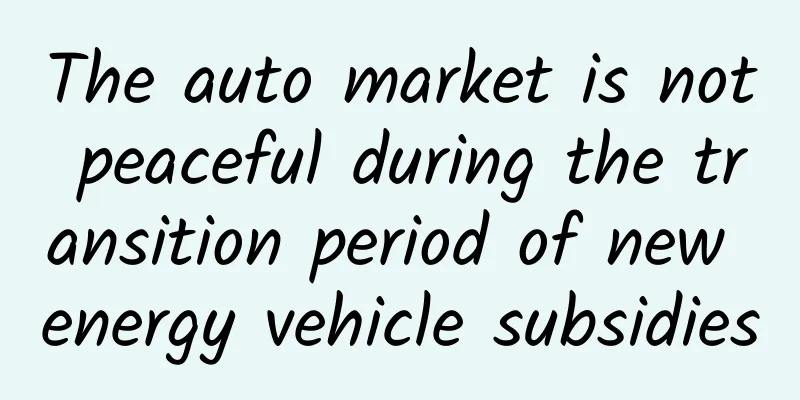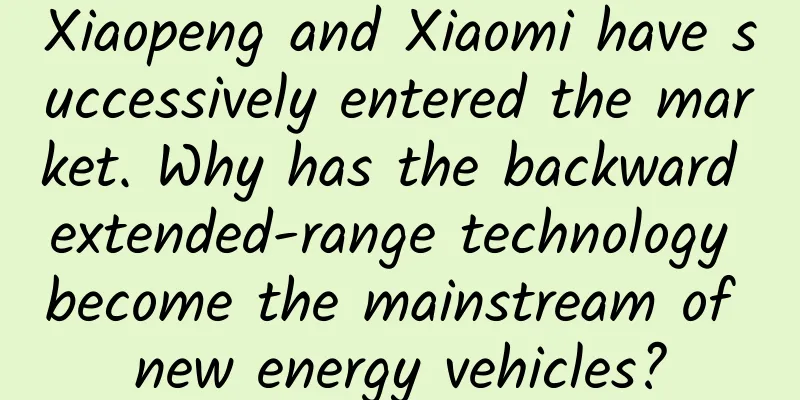The auto market is not peaceful during the transition period of new energy vehicle subsidies

|
In the 2018 version of the subsidy policy, February 12 to June 11 is a transition period. During this period, new energy passenger cars and buses registered will be subject to 0.7 times the 2017 subsidy standard, new energy trucks and special-purpose vehicles will be subject to 0.4 times the subsidy standard, and the subsidy standard for fuel cell vehicles will remain unchanged. On February 13, the Ministry of Finance, the Ministry of Industry and Information Technology, the Ministry of Science and Technology, and the National Development and Reform Commission jointly issued the "Notice on Adjusting and Improving the Financial Subsidy Policy for the Promotion and Application of New Energy Vehicles" (hereinafter referred to as the "2018 Subsidy Policy"), which generally raised the technical requirements for various subsidy standards for new energy vehicles. According to the policy, some models will receive more subsidies if they are sold during the transition period; some models will receive more subsidies if they are sold after the transition period. How is the new energy vehicle market operating during the four-month transition period? Is the market transition smooth? What measures have automobile companies taken during this special period? How do consumers view the adjustment of subsidy policies? When will the automobile industry truly get rid of "subsidy dependence"? In response to these questions, reporters from China Automotive News visited a number of new energy vehicle dealers and interviewed a number of consumers and industry experts to seek answers. The market surged 141% in the first five months, and the transition period became a clearance period. When the 2018 subsidy policy was first released, many industry insiders commented: "We hope that the transition period will smooth out fluctuations and avoid a sharp drop in production and sales data." However, judging from the overall performance of the current market, the "dive" phenomenon in the first and second half of the year with June as the dividing line may be unexpectedly serious. According to the latest data released by the China Association of Automobile Manufacturers (hereinafter referred to as "CAAM"), from January to May this year, my country's production and sales of new energy vehicles both reached 328,000 units, up 122.9% and 141.6% year-on-year, respectively. Among them, the production and sales of pure electric vehicles both reached 250,000 units, up 105.1% and 124.7% year-on-year, respectively; the production and sales of plug-in hybrid vehicles were 79,000 units and 78,000 units, up 207.3% and 218.4% year-on-year, respectively. It is worth noting that in January this year, which was the window period of the 2018 subsidy policy, the domestic new energy vehicle market had a high year-on-year growth rate, but compared with December last year, there was a sharp month-on-month decline, especially the sales of pure electric vehicles, which fell 74.1% month-on-month. "The sales volume of new energy vehicles in the first five months of this year has increased so much year-on-year, which is indeed greatly affected by the 2018 subsidy policy." Xu Haidong, assistant secretary-general of the China Association of Automobile Manufacturers, admitted in an interview with a reporter from China Automobile News that with the rapid expansion of the scale of my country's new energy vehicle market, the year-on-year growth rate should be around 50% even if it is at a high level. Based on conservative estimates, the China Association of Automobile Manufacturers has set an expected sales target of 1 million new energy vehicles this year. However, affected by the 2018 subsidy policy, some automobile companies have adopted the method of "clearing stocks in advance" to cope with the substantial reduction in the subsidy amount for some models, which has led to a year-on-year increase of more than 140% in the sales volume of new energy vehicles in my country in the first five months of this year. In Xu Haidong's view, new energy commercial vehicles, especially new energy buses, are an important reason for the sales growth during the subsidy policy transition period. This is related to the sharp decline in the subsidy amount for new energy buses in the 2018 subsidy policy. According to the 2018 subsidy policy, although the subsidy structure for new energy buses is the same as that in 2017, only the technical requirements have been improved and the subsidy amount has been reduced, if the multiplier effect is not calculated, the reduction for a single vehicle ranges from 33% to 50%. Taking a 6-8 meter non-fast-charging pure electric bus as an example, without considering the adjustment coefficient, the upper limit of the central government's subsidy for a single vehicle in 2017 was 90,000 yuan, while it was only 55,000 yuan in the 2018 subsidy policy; if you choose to register during the transition period, the subsidy for a single vehicle is 63,000 yuan, which is nearly 10,000 yuan more than after the 2018 subsidy policy was officially implemented. Since most bus products belong to centralized procurement orders, based on this, new energy bus companies will definitely choose to do their best to promote the sales of related products during the transition period, so as to obtain more financial subsidies. According to statistics from the China Automobile Association, from January to May this year, the year-on-year growth rate of sales of new energy commercial vehicles in my country has reached 207%. The market may not be optimistic in the second half of the year as car companies pay for subsidies themselves In comparison, the new energy passenger vehicle market was less affected by the transition period of the subsidy policy, but it also saw a year-on-year increase of up to 133%. Why did this phenomenon occur? After visiting a number of new energy passenger vehicle 4S stores in Beijing, the reporter found that it might be mainly because new energy passenger vehicle companies have already paid out of their own pockets to start sales in advance in accordance with the 2018 subsidy policy. According to Manager Chen of Pangda BAIC New Energy Laiguangying Store, the main model in the store is the EX360 with a range of 390 kilometers. In the 2018 subsidy policy, the subsidy for new energy passenger cars with a range of 300 to 400 kilometers is 45,000 yuan, which is 1,000 yuan higher than in 2017. Since it was launched in March, this product has been sold in accordance with the 2018 subsidy policy. The part that cannot be covered by the national subsidy is borne by the company. After deducting the subsidy, the price is about 100,000 yuan, which is a hot-selling model in the store. At another SAIC New Energy Passenger Vehicle 4S store located in Chaoyang District, Beijing, a sales consultant also told reporters that since the 2018 subsidy policy was announced at the beginning of this year, Roewe's new energy passenger vehicle products have been sold according to the new subsidy amount. Although the new subsidy policy was officially implemented on June 12, the product prices in the store will not change. At Beijing Huanyao Automobile Service Co., Ltd., BYD previously implemented full subsidies for 2017 for older models such as the e5 300 and Song EV300 during the transition period. For new models launched during the transition period, the subsidies did not decline due to upgrades such as driving range. When talking about the market trend after the implementation of the new subsidy policy, Xu Haidong said that it might be difficult to maintain the high growth level of the first five months in the second half of the year, and the possibility of a substantial slowdown in the sales growth of new energy vehicles cannot be ruled out. Based on comprehensive considerations of various factors, the China Association of Automobile Manufacturers still expects the overall sales of new energy vehicles in my country this year to remain at around 1 million vehicles. Low-end products are cleared out faster and product structure is upgraded significantly According to a research report by an international investment bank, in 2017, BAIC New Energy became the second new energy vehicle company after BYD to enter the 100,000-vehicle club, while the sales of new energy products of automobile companies such as SAIC and Zhidou also doubled. However, due to the fact that 70% of the main selling models of mainstream new energy vehicle companies on the market have been A00-level for a long time in the past, after the implementation of the 2018 subsidy policy, subsidies for products with a range of less than 300 kilometers will decline to varying degrees, and sales may be greatly affected. Private consumers are insensitive to policy; hybrids stand out Although the subsidy policy has been fully reduced, which has far-reaching and significant impacts on the automotive industry and enterprises, it does not seem to have a significant impact on private consumption. After the announcement of the adjustment of the 2018 subsidy policy, Mr. Lin, who lives in Changping District, Beijing, decided to go to a new energy vehicle 4S store to ask if the price had changed. However, when he learned that the store had already started selling according to the new subsidy policy at the beginning of this year, Mr. Lin said that as long as he got the quota, he would consider buying a new energy vehicle immediately. During the conversation, Mr. Lin told reporters helplessly that he was not very "cold" about new energy vehicles, but suffered from the "indefinite lottery" of ordinary fuel vehicles. Seeing that it was becoming more and more difficult to obtain the quota of new energy vehicles, he applied for the allocation quota of personal new energy passenger cars early in January this year, but it seems that the "winning rate" is getting lower and lower. The latest news is that it has been scheduled until 2024. He said: "No matter how the subsidy policy is adjusted, as new energy vehicles enjoy the policy of no restrictions on driving, as long as there is a quota, I will buy a car." However, in Mr. Lin's view, new energy vehicles are just a means of transportation for daily commuting. As long as the functions and performance of the product can meet the needs of daily use, he will still buy a lower-priced product. Ms. Xu, who lives in Fangshan District, Beijing, said in an interview with a reporter from China Automotive News that because her home and workplace are far apart and her workplace is not equipped with free charging piles, products with longer driving range are more suitable for her. After communicating with the salesperson, she learned that due to the implementation of the new subsidy policy, products with longer driving range can receive higher subsidies. She decided to increase her budget and purchase a suitable new energy vehicle product in the near future. However, what bothers her is that most of the mainstream pure electric vehicles on the market are domestic brands. Given that Beijing's new energy vehicle license plates are becoming more and more precious, she wants to buy a pure electric vehicle with better quality and a more upscale look, but in the field of joint venture brands, there are not many pure electric products to choose from. In the statistics of new energy vehicles in the first five months of this year, hybrid vehicles have performed particularly well in the market. It is understood that in cities where traditional fuel vehicles are not restricted and purchased, hybrid vehicles are obviously more popular with consumers. Mr. Liu, who lives in Wuxi, Jiangsu Province, recently bought a hybrid vehicle because he has been engaged in online car-hailing operations in recent years and is more sensitive to the cost of using vehicles. In comparison, hybrid vehicles have higher fuel economy. In addition, since Wuxi's public charging pile facilities are still difficult to meet the demand, hybrid vehicle products with low dependence on charging pile facilities are more suitable. When talking about the adjustment of subsidy policies, Mr. Liu said that he did not pay too much attention to it. Although he knew that prices might rise, the subsidies obtained by hybrid vehicle products in 2017 had dropped to half of that in 2016. Therefore, for Wuxi citizens, subsidy policies are not an important factor in driving the growth of the private consumption market of new energy vehicles. Mr. Liu pays more attention to maintenance costs, vehicle value retention rate and other issues. (Data from China Association of Automobile Manufacturers) As a winner of Toutiao's Qingyun Plan and Baijiahao's Bai+ Plan, the 2019 Baidu Digital Author of the Year, the Baijiahao's Most Popular Author in the Technology Field, the 2019 Sogou Technology and Culture Author, and the 2021 Baijiahao Quarterly Influential Creator, he has won many awards, including the 2013 Sohu Best Industry Media Person, the 2015 China New Media Entrepreneurship Competition Beijing Third Place, the 2015 Guangmang Experience Award, the 2015 China New Media Entrepreneurship Competition Finals Third Place, and the 2018 Baidu Dynamic Annual Powerful Celebrity. |
>>: US official: Tesla battery reignites twice after fatal crash
Recommend
China Hernia Day丨Don’t ignore the small matter of “hernia”! Talk about “hernia”
March 7th of every year is "China Hernia Day...
What is the most successful content marketing strategy?
Let’s do an experiment. If you search the words “...
China's 400 million chronic disease population, in addition to being related to tobacco and alcohol, eating habits such as rice and steamed buns are also important causes
Introduction There are 400 million people diagnos...
Zhejiang Telecom Large Bandwidth Rental
Zhejiang Telecom large bandwidth rental, server l...
The 10 most popular growth hacking strategies in China in 2017
Any growth practice starts with small things. In ...
Nissan launches Nismo Watch concept smartwatch: can monitor fuel consumption speed
[September 10 news] Automobile manufacturer Nissa...
The man-machine battle is about to begin. AlphaGo vs. Lee Sedol. Who do you bet on to win?
In March, a major event that will attract worldwi...
It's quite "bald". It turns out that you are not the only one who is bald, they are also bald
Spring is the season with the most hair loss in t...
If Darwin were alive today, he would rethink "The Origin of Species"
Anyone who has seen the movie "Prometheus&qu...
Case analysis: How to conduct operational data analysis
The article mainly outlines the methods and proce...
Prospering by the sea and moving towards "green": my country's floating wind power opens a new era in the deep blue
Author: Duan Yuechu Cheng Wing Chun Huang Yanhong...
6 aspects to talk about the community operation framework
In this article, I want to talk about community o...
Some people wear short sleeves, some wear cotton coats. How should we dress randomly when the seasons change?
Whenever the seasons change, people's dressin...
Can tea be used for latte art? What kind of art is the "tea art" in "Dream of the Red Chamber"?
Audit expert: Liu Jun College of Food Science and...
What gifts are healthier for the Spring Festival?
China is a country of etiquette, where we believe...









